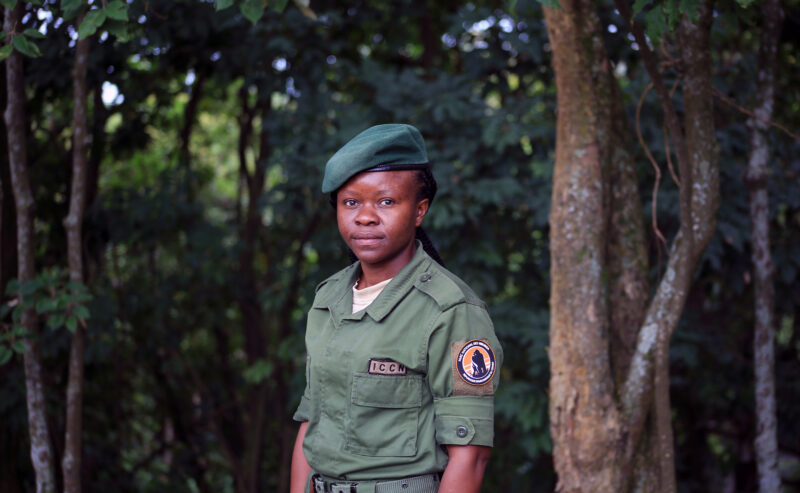
Support Angèle in the Paris Marathon >

Home » Wildlife » Primates » Mountain Gorillas » Mountain Gorilla Facts
Around 350 of the world’s estimated 1,075 wild mountain gorillas live in the resource-rich Virunga mountains, the exploitation of which threatens the species’ very existence. Far less abundant and more beautiful than any raw material, this majestic great ape is DRC’s real treasure.
The gorillas’ biodiverse rainforest environment is stratified into distinct specific vegetative zones based on altitude. Most of their time is spent near the base of the mountains, where vegetation grows more densely. The air throughout the mountain’s zones is moist and misty, leading them to be known as cloud forests.
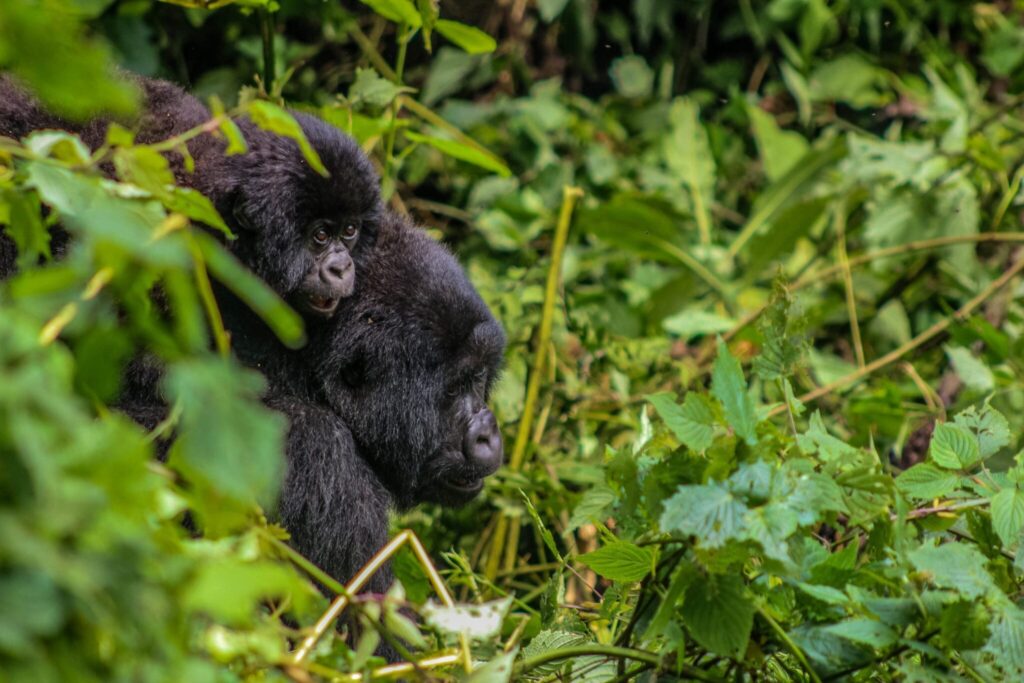
Over one third of the global population of mountain gorillas live on the lush slopes of the Park’s dormant volcanoes. Compared to their eastern lowland cousins, mountain gorillas have thicker hair, an adaptation which protects them against the sub-zero temperatures often encountered at altitudes of 7,000 to 14,000 ft (2,000 to 4,000 m).
Challenges to dominant silverbacks are met with impressive displays of strength and aggression, including charges, chest-beating, and vocal intimidation. Despite this, gorillas generally reside in a state of calm, subsist on a mainly herbivorous diet of roots, shoots, fruit, bark, and pulp, with about 0.1% coming from invertebrates.
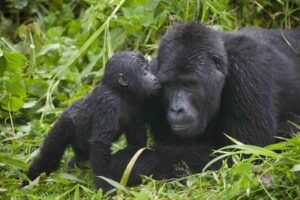
Uganda, Bwindi Impenetrable National Park, Infant Mountain Gorilla (Gorilla gorilla beringei) leans in to kiss Silverback adult male resting in rainforest
Like most primates, mountain gorillas are social animals. They live in groups of fascinating complexity called troops or bands, led by a dominant alpha male known as a silverback. The silverback protects its members and directs troop activities such as nesting, feeding and migration between seasonal feeding areas.
The streak of silver hair, after which mature males are named, develops following adolescence. Gorillas walk on their knuckles, have dark brown irises encircled by black rings, and possess unique nose prints. Adult mountain gorillas, as well as having thicker and longer fur, tend to be smaller than other subspecies.
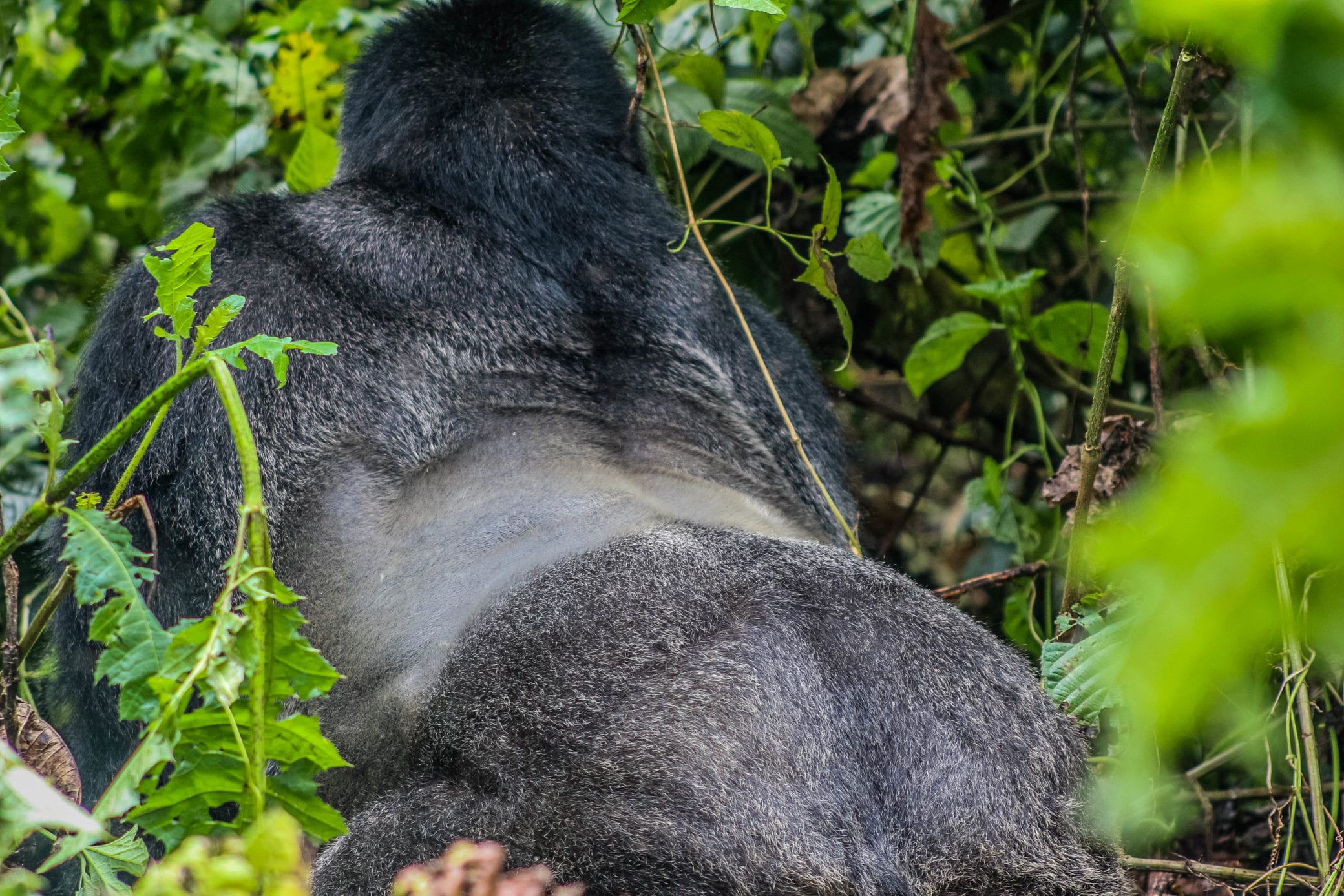
After nearly nine months of gestation, infants enter the world weighing just 4 lbs. From four months they begin clinging to their mothers’ backs, remaining there for two or three years. Despite beginning life so small, adult males typically weigh 430 lbs and can stand five feet tall.
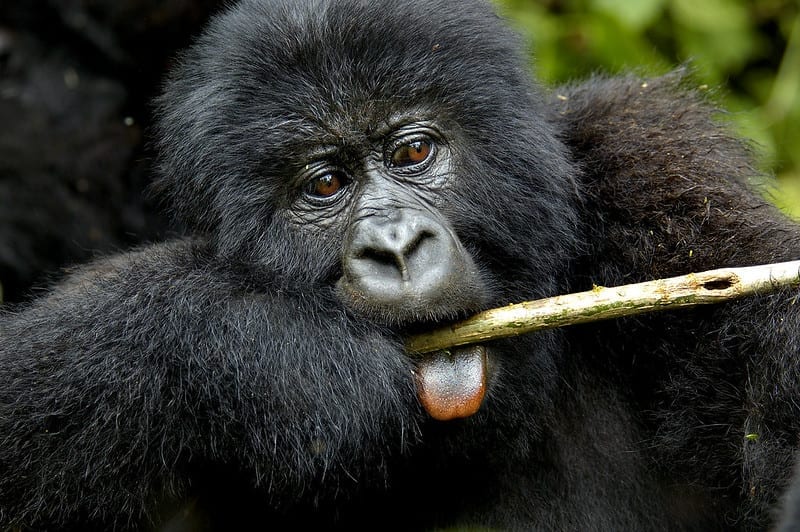
A mountain gorilla’s mainly plant-based diet is made up of 142 varieties of leaves, stems, shoots, and fruits.
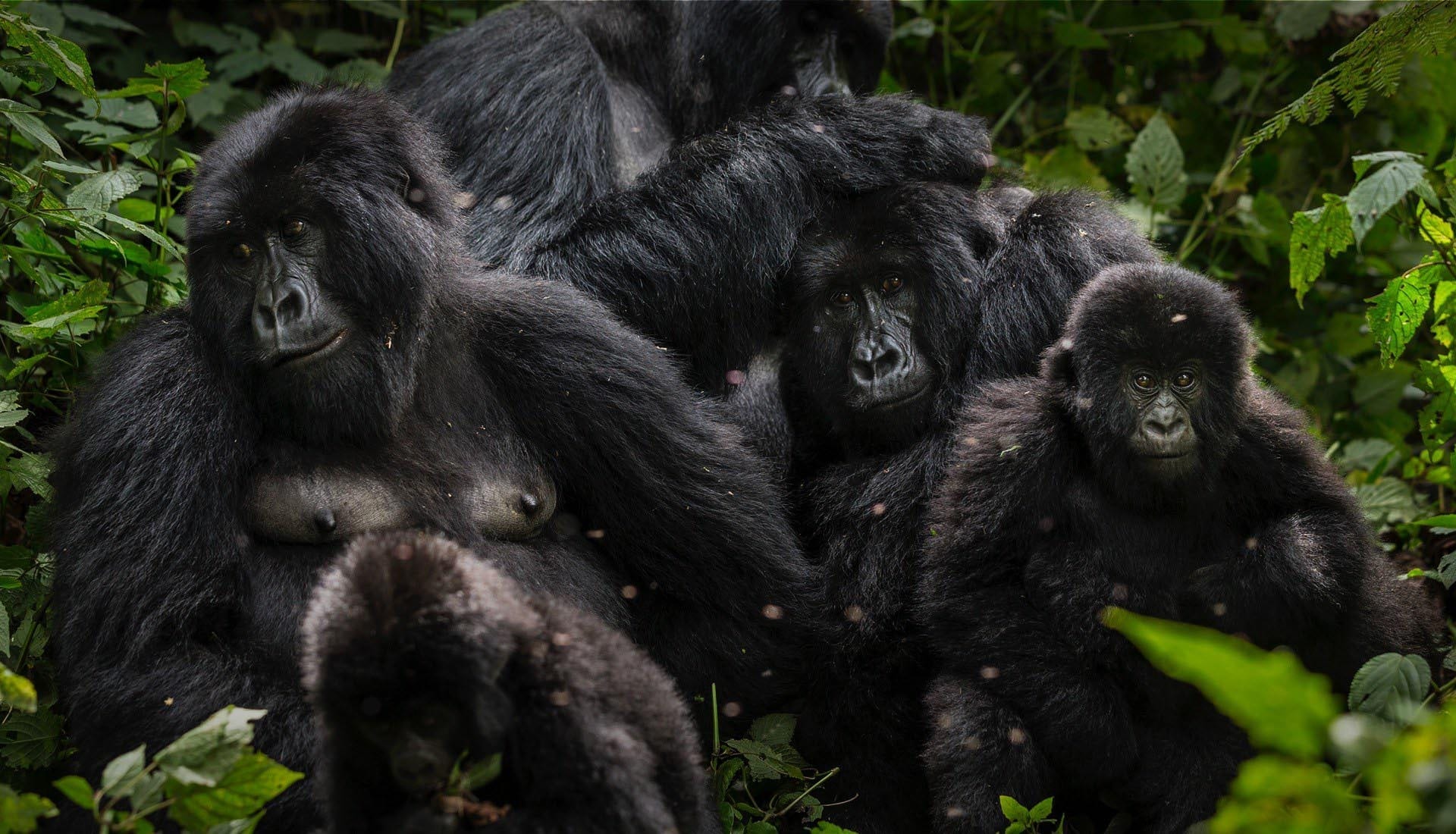
Mountain gorillas normally live in groups known as troops, which are led by a dominant silverback. The largest group ever encountered was 65 members strong.
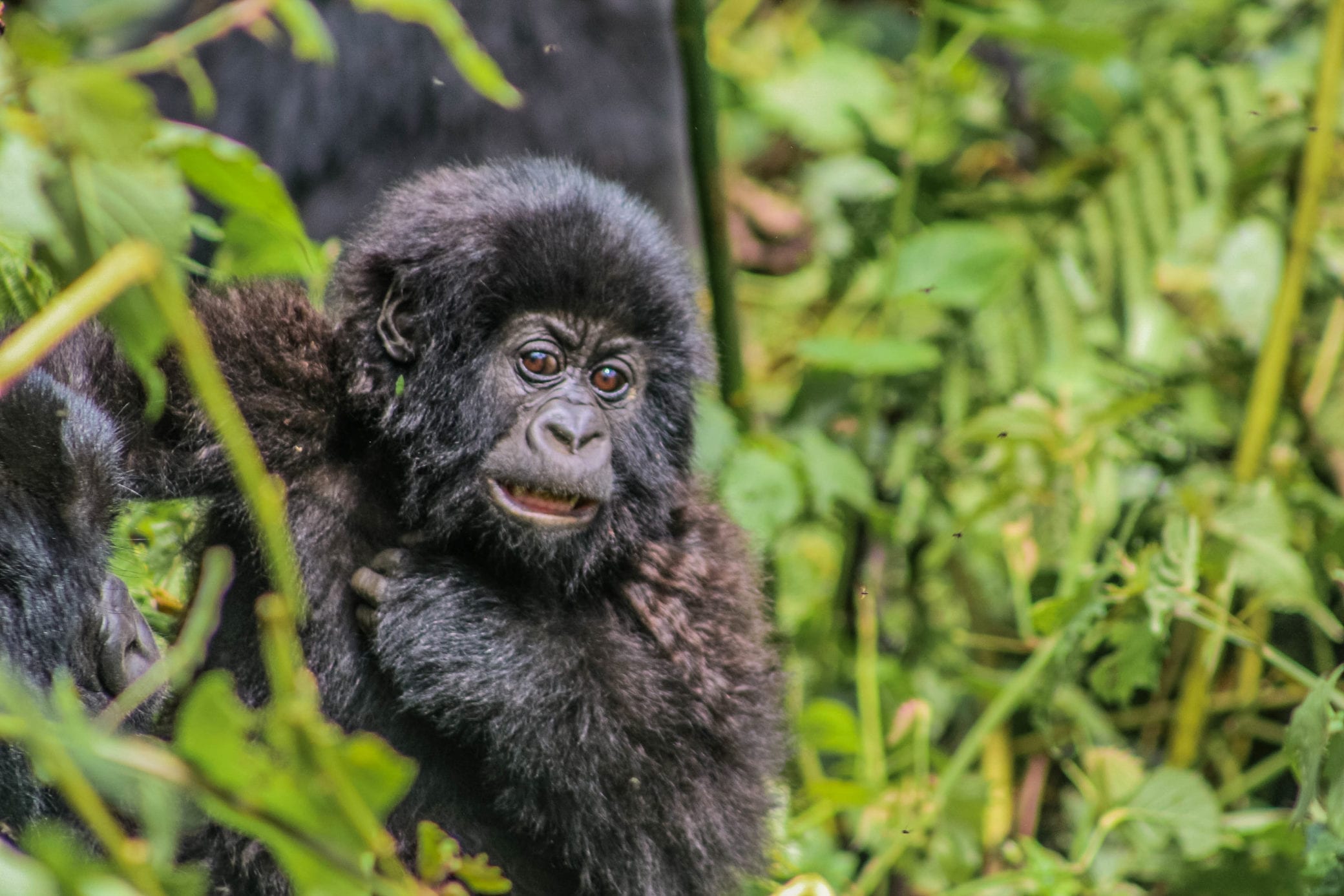
Gorillas are incredibly communicative creatures. They use facial expressions, calls, postures, and gestures to convey their intentions and feelings.
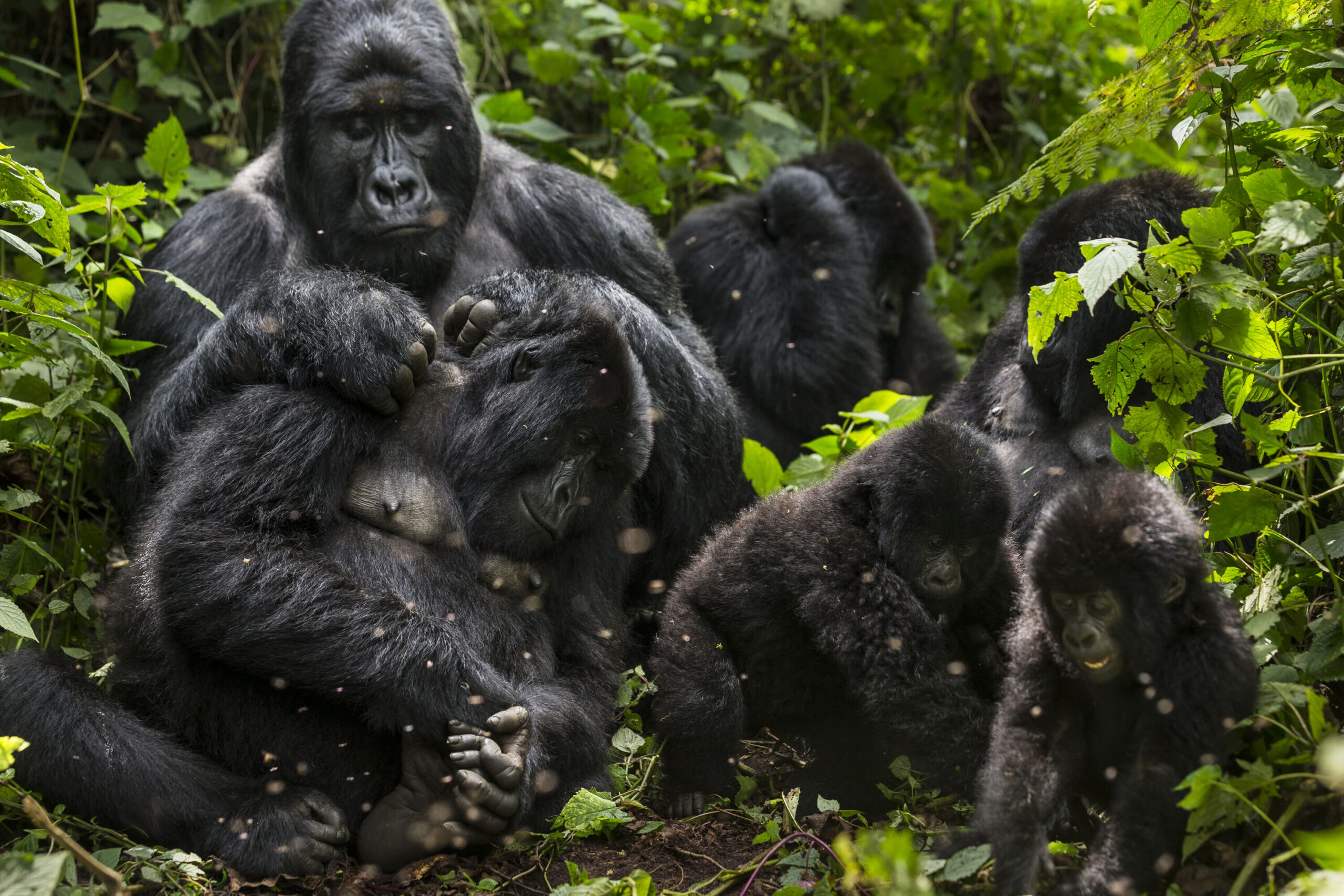
Despite their reputation as aggressive and dangerous, mountain gorillas are known to be emotionally intelligent. They have been observed grieving lost family members, touching noses to greet one another, and singing when a particularly lush nesting site is discovered.
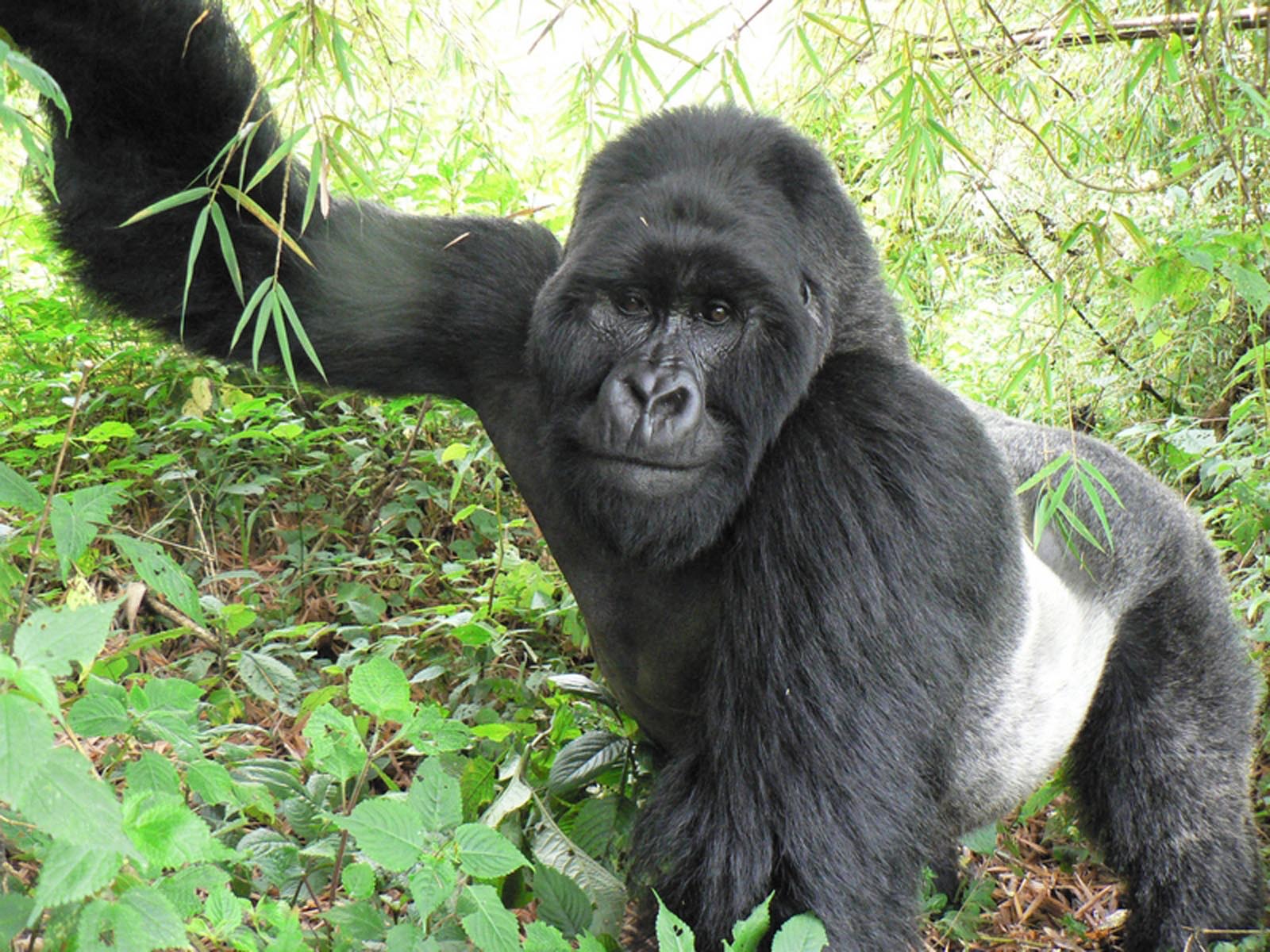
Gorillas regularly migrate between troops, a behavior which prevents inbreeding and allows subordinate silverbacks the opportunity to lead a troop and thereby mate with females.
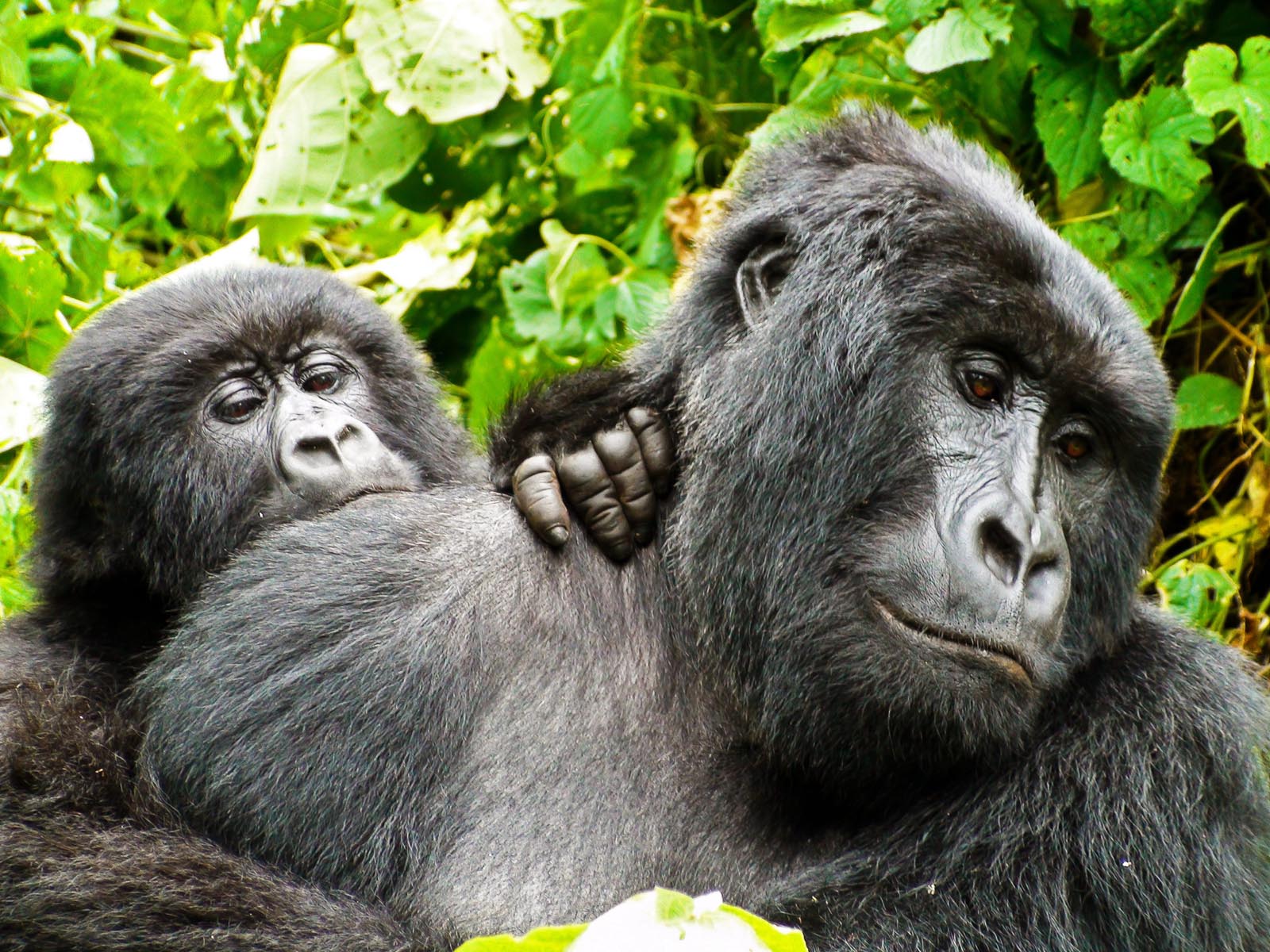
Gorillas can live for up to 40 years in the wild. In captivity, they have been known to reach 50 years of age.
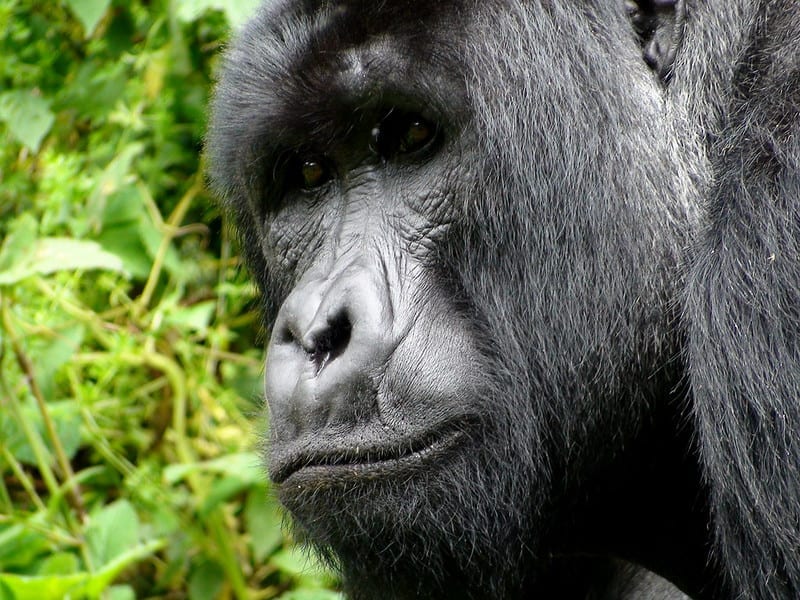
Gorillas can be identified by observing an unlikely part of the head, with each individual having a unique noseprint. The species is distinguishable from most other kinds of primate by having evolved without a tail.
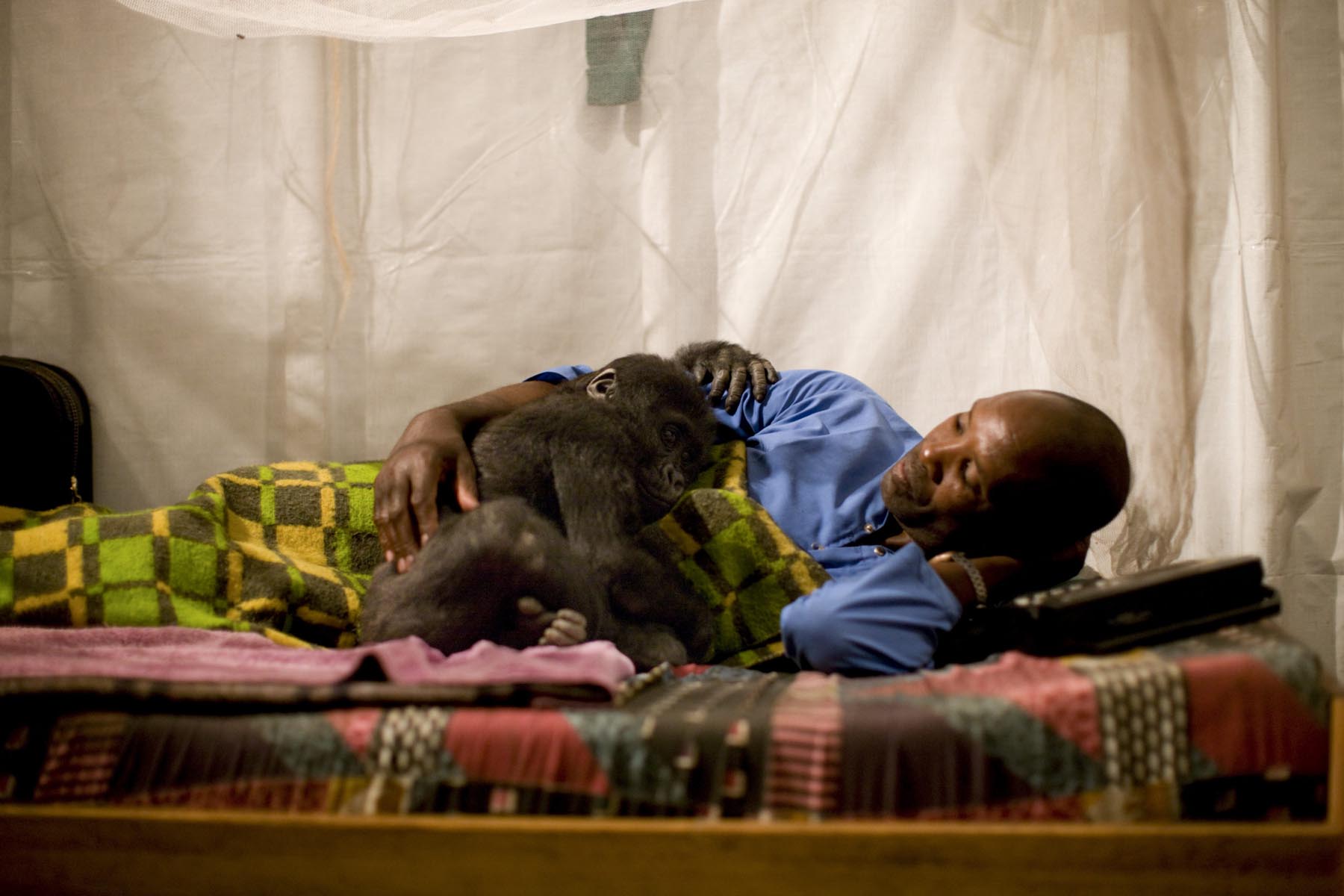
Gorillas are one of our closest relatives, with humans sharing 98.3% of our DNA with the primate.
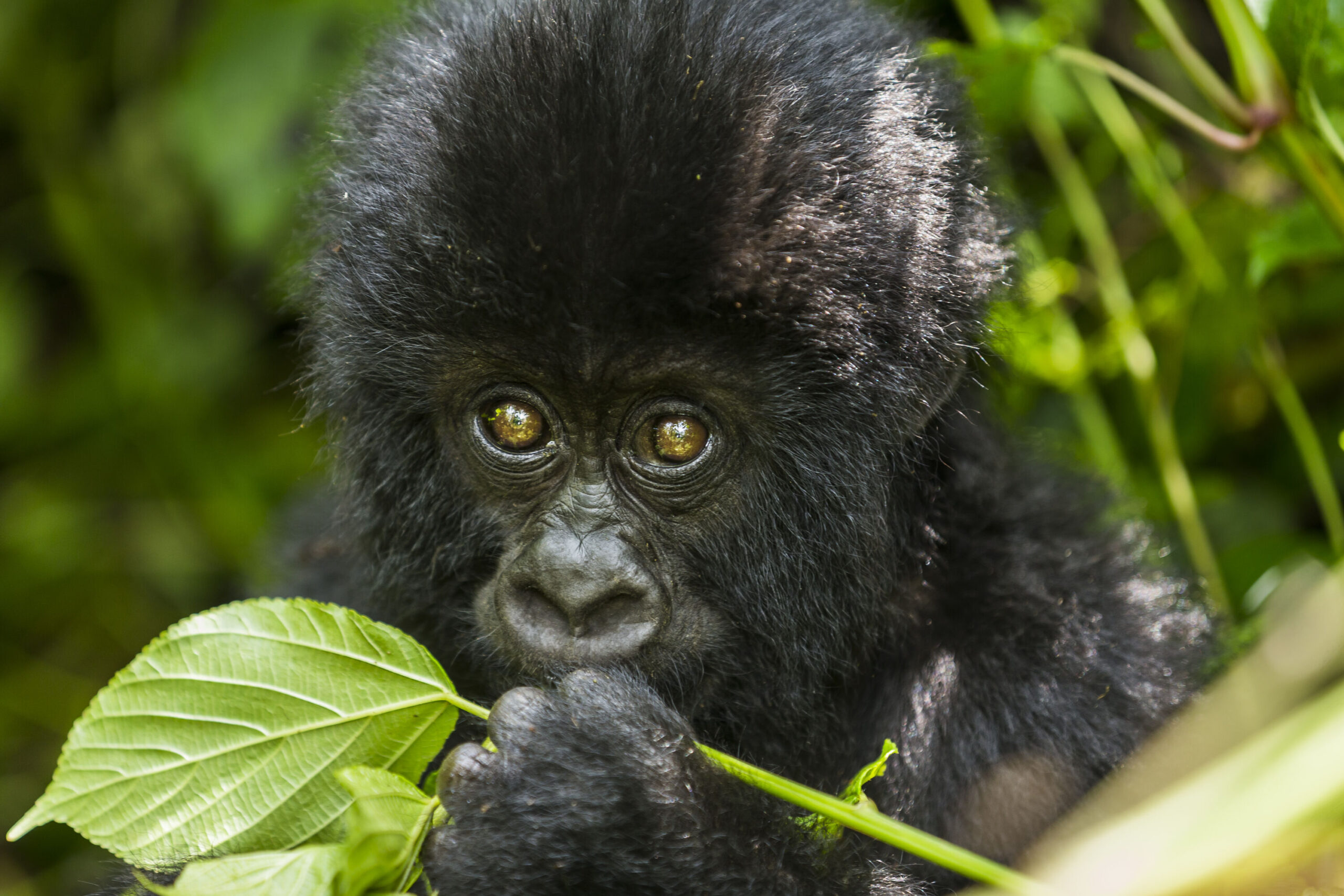
In 1997 there were as few as 320 wild mountain gorillas. Conservation efforts have increased numbers to around 1,000 individuals, lifting the animal out of the IUCN critically endangered category into endangered.
For most runners, crossing the finish line of the Paris Marathon is a moment of triumph—a celebration of endurance, perseverance, and the completion of a gruelling journey. But for the 750 Rangers of Virunga National Park, there is no finish line - each day brings a new challenge.
Every day, they fight—not for medals, but for survival. They stand on the frontlines, protecting endangered wildlife and safeguarding communities in one of the world’s most volatile regions, where almost three decades of conflict have left instability in its wake.
This year, as Virunga marks its 100th anniversary, the reality is stark. Conflict in Eastern Congo has intensified, with major cities such as Goma and Bukavu under rebel control. Despite decades of conservation efforts and our mission to foster regional stability, we find ourselves fighting for survival once again.
Angele’s run is a symbol of our fight.
But she can’t do it alone. Neither can we.
Support Angele’s MarathonAdopt Now
Shop Store
Wildlife